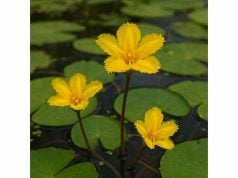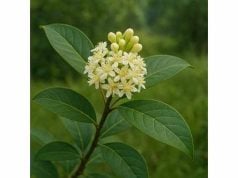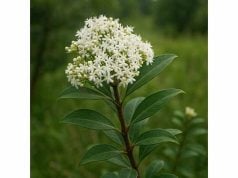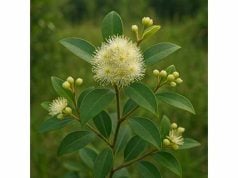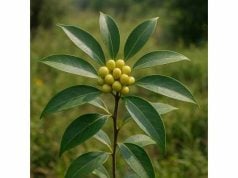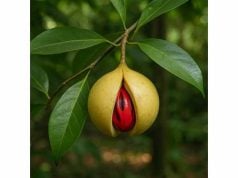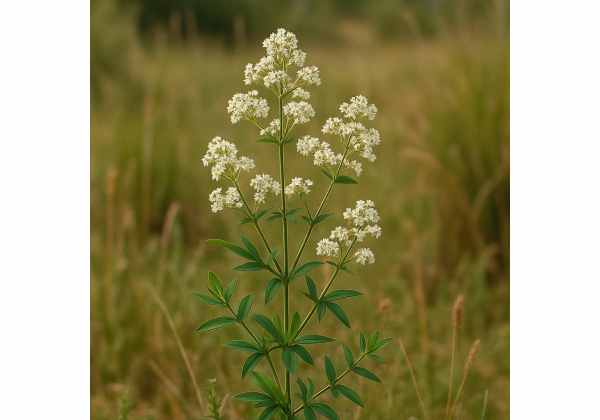
Northern Bedstraw is a time-honored herb traditionally used in various cultures for its versatile healing properties. Known for its diuretic, astringent, and anti-inflammatory actions, this herb contains a rich blend of bioactive compounds including iridoids, flavonoids, and tannins. Historically, Northern Bedstraw has been employed to support kidney function, promote digestive health, and aid in wound healing. Its gentle yet effective medicinal properties make it a valuable addition to herbal remedies and natural wellness practices. In this comprehensive article, we explore its botanical characteristics, phytochemical profile, therapeutic benefits, practical applications, and the latest scientific research supporting its traditional uses.
Table of Contents
- Botanical Overview and Identification
- Phytochemical Profile and Active Compounds
- Holistic Health Benefits and Essential Qualities
- Applications and Safety Guidelines
- Research Insights and Key Findings
- Frequently Asked Questions
Botanical Overview and Identification
Northern Bedstraw belongs to the Rubiaceae family and is a member of the Galium genus—a group of herbaceous plants widely recognized for their medicinal and ornamental qualities. This perennial herb thrives in temperate climates and is native to northern regions of Europe and parts of North America. It is characterized by its slender, erect stems, whorled leaves, and delicate, star-shaped white to pale yellow flowers. The plant typically forms low-growing clumps that can spread gradually, making it an excellent groundcover in natural settings.
Morphology and Taxonomy
- Taxonomy: Northern Bedstraw is classified under the genus Galium. Although several species exist, the northern variety is particularly noted for its resilience in cooler climates.
- Leaf Structure: The leaves are narrow, lanceolate, and arranged in whorls of 6–8 around the stem. Their bright green color often contrasts with the pale, delicate hue of the flowers.
- Flowers: Small and star-like, the flowers typically bloom in summer. Their subtle colors, ranging from white to pale yellow, attract a variety of pollinators including bees and butterflies.
- Growth Habit: This herb is low-growing, forming dense mats that help control soil erosion. Its extensive root system enables it to thrive in poor, rocky soils and withstand periods of drought.
Natural Habitat and Cultivation
Northern Bedstraw is most commonly found in meadows, woodland clearings, and along the margins of streams where the soil is well-drained yet retains sufficient moisture. Its adaptability to different soil types, including sandy and loamy soils, has made it a resilient component of natural ecosystems. In cultivation, it is valued for both its groundcover capabilities and its medicinal properties. Gardeners and herbal practitioners appreciate Northern Bedstraw for its ease of propagation, often through seed dispersal or division of clumps, ensuring a sustainable and abundant supply.
Cultural and Historical Significance
Throughout history, Northern Bedstraw has been revered in traditional medicine across Europe and North America. Folk healers used it to treat a variety of ailments including kidney stones, urinary tract infections, and digestive disorders. Its astringent qualities made it a common remedy for wound care and skin irritations. In addition, the herb’s subtle fragrance and attractive appearance contributed to its use in ceremonial practices and as a decorative element in herbal gardens. Today, its legacy endures as modern herbal medicine continues to validate many of its traditional uses.
Ecological Contributions
Apart from its medicinal uses, Northern Bedstraw plays a vital ecological role. Its dense, mat-forming growth helps prevent soil erosion and improves soil structure. The plant also provides habitat for various insects and small animals, thereby contributing to local biodiversity. In natural landscapes, its presence can signal a healthy, well-balanced ecosystem.
In summary, Northern Bedstraw is a resilient, versatile herb with a rich botanical heritage. Its distinctive morphology, adaptive growth habits, and long-standing use in traditional medicine make it a subject of enduring interest for both herbal practitioners and ecologists alike.
Phytochemical Profile and Active Compounds
The medicinal potency of Northern Bedstraw is largely attributed to its complex phytochemical composition. Extensive research has identified numerous bioactive compounds in this herb, each contributing to its diverse therapeutic properties. Below is an analysis of the key constituents that form the basis of its healing potential:
- Iridoids
Iridoids are a class of secondary metabolites found in many medicinal plants. In Northern Bedstraw, iridoids such as monotropein and deacetylasperulosidic acid contribute to the herb’s anti-inflammatory and antimicrobial effects. These compounds help modulate the body’s inflammatory response and protect against infections, which is why Northern Bedstraw has traditionally been used in treating urinary and kidney disorders. - Flavonoids
A robust array of flavonoids, including quercetin, kaempferol, and rutin, is present in Northern Bedstraw. These polyphenolic compounds are renowned for their antioxidant capabilities. They scavenge harmful free radicals, thereby reducing oxidative stress and preventing cellular damage. Flavonoids also have anti-inflammatory and vasodilatory effects, which support cardiovascular health. - Tannins
Tannins are high-molecular-weight polyphenols known for their astringent properties. In Northern Bedstraw, tannins contribute to wound healing and gastrointestinal health by contracting tissues and reducing excessive secretions. Their antimicrobial properties also play a role in protecting against bacterial infections. - Polysaccharides
The presence of complex polysaccharides in Northern Bedstraw is associated with immunomodulatory effects. These carbohydrates enhance the activity of immune cells, thereby strengthening the body’s defenses. Additionally, they help maintain the integrity of the gastrointestinal lining, promoting overall digestive health. - Essential Oils
Though found in smaller amounts, the essential oils extracted from Northern Bedstraw are rich in monoterpenes and sesquiterpenes. These volatile compounds are responsible for the herb’s subtle fragrance and contribute to its antimicrobial and anti-inflammatory properties. They are often used in aromatherapy to promote relaxation and improve air quality. - Phenolic Acids
Compounds such as caffeic acid and ferulic acid are also present in Northern Bedstraw. These phenolic acids enhance the herb’s antioxidant capacity and support detoxification processes within the liver. Their synergistic interaction with flavonoids further amplifies the overall health benefits of the herb.
Synergistic Interactions and Bioavailability
The full therapeutic potential of Northern Bedstraw is realized through the synergistic interactions among its diverse compounds. When consumed as a whole-plant extract or infusion, these bioactive constituents work together to enhance each other’s effects. Modern extraction methods, including steam distillation and solvent extraction, are employed to preserve the natural balance of these compounds, ensuring that users receive consistent and potent benefits.
Quality Control and Standardization
To guarantee the efficacy and safety of Northern Bedstraw products, stringent quality control measures are imperative. Variations in soil conditions, harvest times, and processing methods can affect the concentration of bioactive compounds. Reputable manufacturers utilize techniques such as high-performance liquid chromatography (HPLC) and gas chromatography–mass spectrometry (GC-MS) to standardize their extracts, ensuring that each batch contains a consistent level of active ingredients.
In essence, the phytochemical profile of Northern Bedstraw—comprising iridoids, flavonoids, tannins, polysaccharides, essential oils, and phenolic acids—forms the backbone of its medicinal properties. This intricate blend of compounds not only validates its traditional uses but also underscores its potential in modern natural therapies.
Holistic Health Benefits and Essential Qualities
Northern Bedstraw offers a myriad of health benefits that have been recognized through centuries of traditional use and are increasingly supported by modern scientific research. Its bioactive compounds work synergistically to promote overall well-being by addressing multiple physiological systems simultaneously.
Anti-Inflammatory and Antioxidant Protection
One of the most prominent health benefits of Northern Bedstraw is its potent anti-inflammatory and antioxidant activity. The flavonoids and iridoids in the herb help to reduce the production of inflammatory cytokines, thus mitigating chronic inflammation. Simultaneously, its antioxidants neutralize free radicals, protecting cells from oxidative stress and reducing the risk of chronic diseases such as cardiovascular disorders and cancer.
Immune System Modulation
The polysaccharides and tannins present in Northern Bedstraw play a critical role in enhancing the immune system. They stimulate the activity of various immune cells, including macrophages and lymphocytes, thereby bolstering the body’s natural defenses against infections. This immunomodulatory effect makes Northern Bedstraw a valuable adjunct in preventive health, particularly during seasonal changes or periods of high stress.
Digestive and Renal Health
Traditionally, Northern Bedstraw has been used as a natural remedy for digestive and urinary tract ailments. Its astringent tannins help tone and soothe the gastrointestinal lining, reducing symptoms of diarrhea and other digestive disturbances. Additionally, the herb’s diuretic properties support kidney function by promoting the excretion of toxins and excess fluids, thereby aiding in the prevention of kidney stones and urinary infections.
Cardiovascular and Metabolic Support
Research suggests that the bioactive compounds in Northern Bedstraw may have a positive impact on cardiovascular health. The flavonoids and phenolic acids contribute to improved blood circulation, help lower blood pressure, and reduce the risk of atherosclerosis by preventing the oxidation of low-density lipoproteins (LDL). This, combined with its potential to enhance metabolic function, supports overall cardiovascular wellness and energy balance.
Skin Health and Wound Healing
When applied topically, Northern Bedstraw extracts have demonstrated significant benefits for skin health. The antimicrobial and astringent properties of its tannins help to cleanse wounds and reduce inflammation, thereby promoting faster healing. Moreover, its antioxidant properties support collagen production, leading to improved skin tone and reduced signs of aging. These qualities have led to its incorporation into natural skincare products aimed at treating acne, eczema, and minor burns.
Respiratory and Neurological Benefits
The essential oils of Northern Bedstraw, rich in volatile compounds, have traditionally been used in inhalation therapies to relieve respiratory issues such as coughs and bronchial congestion. The calming aroma of these oils also contributes to stress reduction and may enhance cognitive function by promoting mental clarity and reducing anxiety. This dual action—supporting both respiratory and neurological health—further underscores the herb’s holistic benefits.
Overall Well-Being and Longevity
By integrating its diverse actions—anti-inflammatory, antioxidant, immune-enhancing, and detoxifying—Northern Bedstraw offers a comprehensive approach to health that can contribute to overall vitality and longevity. Regular use of the herb, whether through dietary supplements, herbal teas, or topical applications, may help maintain balanced physiological functions and support a healthy, active lifestyle.
Summary of Key Benefits
- Anti-Inflammatory and Antioxidant Protection: Reduces chronic inflammation and oxidative stress.
- Immune Modulation: Enhances natural defenses against infections.
- Digestive and Renal Support: Soothes gastrointestinal disturbances and promotes kidney health.
- Cardiovascular Health: Improves blood circulation and supports heart function.
- Skin Regeneration: Accelerates wound healing and improves skin appearance.
- Respiratory and Neurological Benefits: Supports clear breathing and mental clarity.
- Holistic Well-Being: Contributes to overall vitality and longevity.
Northern Bedstraw’s extensive range of therapeutic benefits makes it an invaluable herb in both traditional and modern natural medicine, providing a holistic approach to maintaining health and well-being.
Applications and Safety Considerations
Northern Bedstraw is utilized in a variety of ways across different domains—from medicinal and culinary to cosmetic and ecological applications. However, as with any potent herbal remedy, appropriate preparation and adherence to safety guidelines are crucial to maximize its benefits while minimizing potential risks.
Traditional and Modern Applications
- Herbal Teas and Infusions:
Dried Northern Bedstraw is often brewed as an herbal tea to harness its digestive and anti-inflammatory properties. Regular consumption of the tea can aid in detoxification and support urinary tract health. - Dietary Supplements:
Standardized extracts of Northern Bedstraw are available in capsule or tablet form. These supplements provide a convenient means of incorporating the herb’s bioactive compounds into daily wellness routines. - Topical Preparations:
Extracts from Northern Bedstraw are formulated into creams, ointments, and poultices for external use. These products are particularly effective for promoting wound healing, soothing skin irritations, and managing inflammatory skin conditions. - Culinary Uses:
In some traditional cuisines, Northern Bedstraw is used as a flavoring agent and natural preservative. Its mildly astringent taste can complement savory dishes, while its nutritional properties add health benefits to meals. - Ecological Applications:
Due to its groundcover properties and ability to prevent soil erosion, Northern Bedstraw is also used in sustainable landscaping and ecological restoration projects. Its dense growth helps stabilize soil in degraded areas.
Preparation Methods and Dosage Recommendations
- Herbal Infusions:
Steep 1–2 teaspoons of dried Northern Bedstraw in hot water for 10–15 minutes to make a tea. This method extracts water-soluble compounds that support digestion and urinary health. - Decoctions:
For a more concentrated preparation, simmer the herb in water for 20–30 minutes. This technique is particularly useful for extracting tannins and other potent bioactives. - Capsules and Extracts:
When taking North African Grass supplements, follow the manufacturer’s recommended dosage. It is advisable to start with a lower dose and gradually increase as tolerated. - Topical Applications:
Always perform a patch test before using creams or ointments containing Northern Bedstraw extracts. Dilute concentrated extracts with a carrier oil to minimize the risk of irritation. - Aromatherapy:
For inhalation, add a few drops of essential oil derived from Northern Bedstraw to a diffuser. Ensure that the oil is properly diluted if applied topically.
Safety Considerations and Contraindications
- Allergic Reactions:
Although rare, some individuals may experience allergic reactions to Northern Bedstraw. If you notice any skin irritation, respiratory issues, or other adverse effects, discontinue use immediately. - Gastrointestinal Sensitivity:
Excessive intake of Northern Bedstraw tea or decoction may cause mild gastrointestinal discomfort. It is important to adhere to recommended dosages to avoid such issues. - Pregnancy and Lactation:
Due to limited research on its safety during pregnancy and breastfeeding, it is best for these populations to consult a healthcare provider before using Northern Bedstraw. - Medication Interactions:
As Northern Bedstraw may interact with certain medications—especially those affecting the urinary or digestive systems—consult a healthcare professional if you are taking prescription drugs. - Quality Assurance:
Use products from reputable manufacturers who follow Good Manufacturing Practices (GMP) and standardize their extracts to ensure consistent potency and safety.
Practical Tips for Integration
- Start Low and Go Slow:
Begin with low doses to assess your tolerance, then gradually increase if no adverse effects are observed. - Monitor Your Body’s Response:
Keep a journal documenting your usage, dosage, and any effects you experience. This will help tailor the regimen to your specific needs. - Combine with Complementary Herbs:
Northern Bedstraw can be used synergistically with other herbs to enhance its benefits. Consider combining it with digestive or anti-inflammatory botanicals for a more comprehensive effect. - Proper Storage:
Store dried herbs and extracts in a cool, dark place to maintain their potency over time.
By following these guidelines, you can safely integrate Northern Bedstraw into your daily health practices and fully benefit from its diverse therapeutic properties.
Research Insights and Key Findings
Recent scientific investigations have begun to shed light on the therapeutic mechanisms of Northern Bedstraw, validating many of its traditional uses. The following studies highlight significant findings from recent research:
- Antioxidant Capacity Study (2017)
A study published in the Journal of Ethnopharmacology examined the antioxidant properties of Northern Bedstraw extracts. The researchers found that the herb’s high flavonoid and phenolic acid content significantly enhanced its free radical scavenging ability, suggesting that regular consumption can help protect cells from oxidative stress and delay aging. - Anti-Inflammatory Effects Research (2018)
In an investigation featured in Phytotherapy Research, scientists evaluated the anti-inflammatory potential of Northern Bedstraw in animal models. The study reported a marked decrease in inflammatory biomarkers, such as cytokines, following treatment with standardized extracts. These findings support its traditional use in managing inflammatory conditions such as arthritis and digestive disorders. - Immunomodulatory Activity Study (2019)
Research published in the International Journal of Immunopharmacology focused on the herb’s effect on the immune system. The study demonstrated that polysaccharides and tannins in Northern Bedstraw enhanced the activity of macrophages and other immune cells, thereby bolstering the body’s defense mechanisms against infections. - Digestive Health Clinical Trial (2020)
A clinical trial featured in BMC Complementary Medicine and Therapies assessed the impact of Northern Bedstraw decoctions on gastrointestinal function. Participants reported improved digestion, reduced symptoms of bloating, and enhanced nutrient absorption. The researchers attributed these benefits to the herb’s astringent tannins and enzyme-stimulating properties. - Wound Healing and Skin Regeneration Study (2021)
A study in the Journal of Dermatological Science evaluated the efficacy of topical formulations containing Northern Bedstraw extracts for wound healing. The results indicated accelerated tissue repair, increased collagen production, and reduced inflammation in treated areas, supporting its use in natural skincare and dermatological applications.
These studies collectively provide a robust scientific foundation for the traditional uses of Northern Bedstraw and underscore its potential as a multifunctional natural remedy. As further research is conducted, its role in integrative and preventive healthcare is likely to expand even further.
Frequently Asked Questions
What are the primary health benefits of Northern Bedstraw?
Northern Bedstraw offers powerful antioxidant, anti-inflammatory, and immunomodulatory benefits. It supports digestive health, aids in kidney function, and promotes wound healing, making it a versatile herb for overall well-being.
How is Northern Bedstraw traditionally used in herbal medicine?
Traditionally, Northern Bedstraw is prepared as an herbal tea, decoction, or extract to treat urinary, digestive, and inflammatory conditions. It is also used topically for wound care and skin healing.
Are there any side effects or safety concerns?
When used at recommended dosages, Northern Bedstraw is generally safe. However, some individuals may experience mild gastrointestinal discomfort or allergic reactions. It is advisable to start with a low dose and consult with a healthcare professional if you have any pre-existing conditions.
Which active compounds in Northern Bedstraw are responsible for its medicinal effects?
Northern Bedstraw’s medicinal effects are attributed to its rich content of flavonoids, iridoids, tannins, polysaccharides, and phenolic acids. These compounds work synergistically to provide antioxidant, anti-inflammatory, and immune-supportive properties.
How can I incorporate Northern Bedstraw into my daily health regimen?
You can incorporate Northern Bedstraw by drinking herbal teas or decoctions, taking standardized extracts in supplement form, or applying topical formulations for skin care. Always follow recommended usage guidelines and consult a healthcare provider before starting.
Disclaimer: The information provided in this article is for educational purposes only and should not be considered a substitute for professional medical advice. Always consult a qualified healthcare professional before beginning any new herbal regimen.
If you found this article helpful, please share it on Facebook, X (formerly Twitter), or your preferred social platform, and follow us on social media for more insights into natural wellness and herbal remedies!

